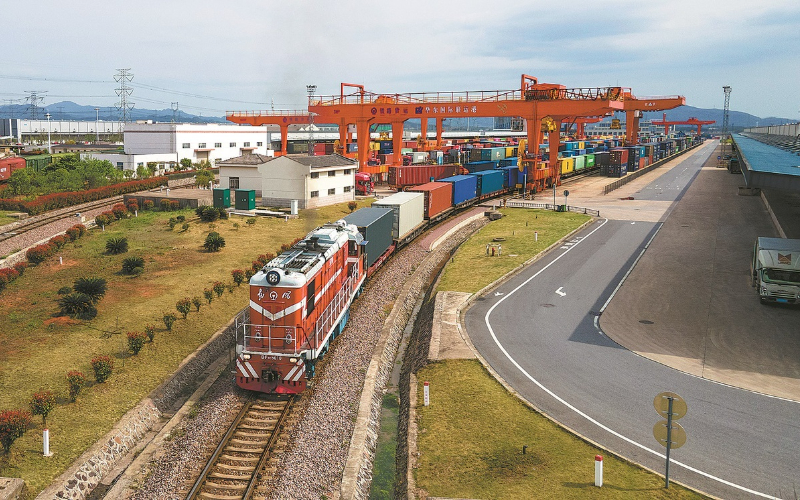Trade opportunities grow under BRI

A freight train carrying 110 containers of household appliances and mechanical equipment departs from Jinhua, Zhejiang province, on its way to Budapest, Hungary, on April 1. HU XIAOFEI/FOR CHINA DAILY
The Belt and Road Initiative has presented massive trade and investment opportunities for European countries such as Hungary and Serbia, helping them develop into important regional players from once being on the periphery of Europe, experts said.
Hungary was the first European country to sign a BRI cooperation agreement with China, which has provided opportunities for the country's infrastructure development and made significant contributions to improving China-Hungary economic and financial ties.
The bilateral trade between the two countries has witnessed remarkable growth in recent years. Last year, their total trade volume exceeded $13 billion, according to data from Hungary.
Moreover, Hungary, among all Central and Eastern European countries, receives the most foreign investment from China. Its direct investment in Hungary reached 7.6 billion euros ($8.2 billion) last year, accounting for 58 percent of the total foreign direct investment in the country.
These investments have helped create more than 10,000 job opportunities in Hungary.
In particular, Chinese investment has played a pivotal role in solidifying Hungary's position as a key player in the European automotive market, said Bai Ming, a researcher at the Chinese Academy of International Trade and Economic Cooperation.
The automotive manufacturing industry, along with its entire supply chain, holds a significant position in Hungary's economy. Chinese companies have recognized the potential of Hungary as a hub for automotive production and have made substantial investments in establishing production facilities and research and development centers, Bai said.
The enhanced cooperation has not only brought financial support but also advanced technology and expertise to Hungary's automotive industry, he added.
Chinese automotive company BYD has announced its plans to establish a new energy passenger vehicle production base in the southern Hungarian city of Szeged, which would bring to the country thousands of new jobs and the latest technology in the industry of the future, the company said in a statement in December.
The economic relationship between Europe and China is characterized by close ties and mutual benefits, and the significant development in Asia, particularly in China, presents opportunities rather than threats, said Xu Hongcai, deputy director of the China Association of Policy Science's Economic Policy Committee. Calls for "decoupling" and "de-risking" are seen as contrary to European interests, he added.
The Hungary-Serbia railway, as part of the BRI program, serves as another example of sound China-EU cooperation that has delivered tangible benefits to Europe and beyond.
The railway, stretching from the Serbian capital of Belgrade to the Hungarian capital of Budapest, covering a total distance of 341.7 kilometers, has been designed to achieve a maximum speed of 200 km per hour.
The section between Belgrade and Novi Sad, Serbia's second-largest city, opened in March 2022, drastically reducing the travel time between the two cities from 90 minutes to just 36 minutes. As of March, the section has handled over 6.83 million passenger trips.
Meanwhile, China and Serbia signed a free trade agreement in October to boost bilateral trade and business ties. The FTA is the first such agreement China has inked with a Central or Eastern European country.
The bilateral trade between China and Serbia has witnessed remarkable growth, with the trade volume skyrocketing from $596 million in 2016 to $4.35 billion last year, according to statistics from China's General Administration of Customs.


